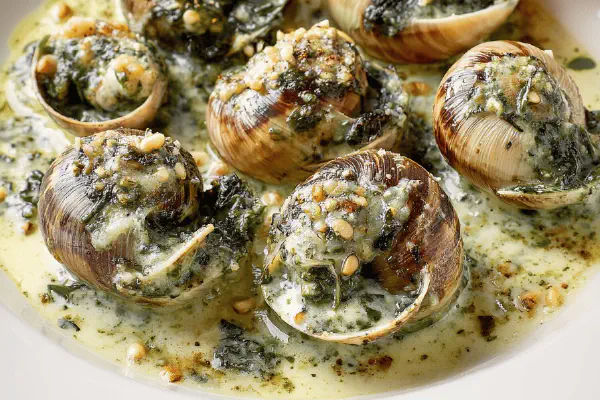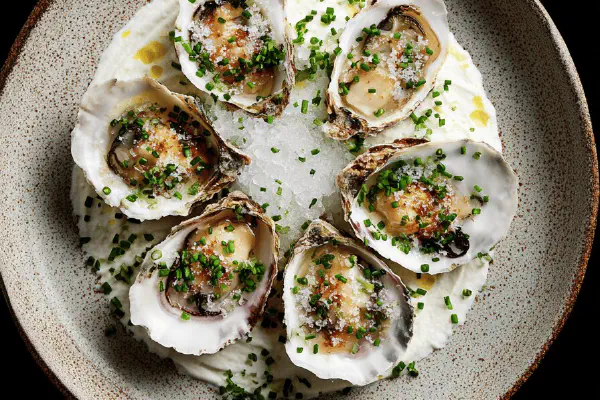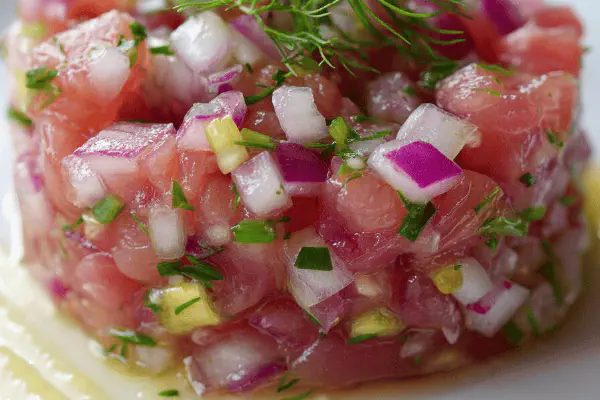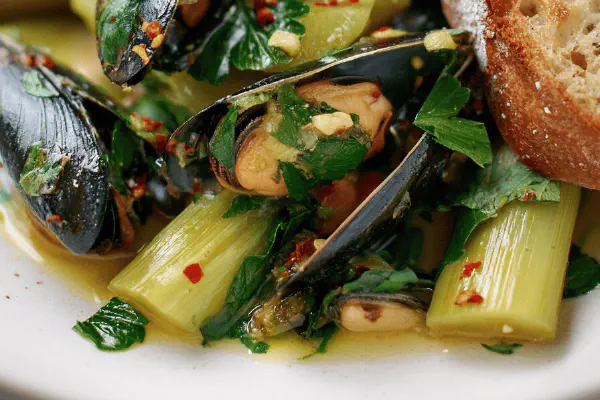Featured Recipe
Oysters with Citrus Mignonette
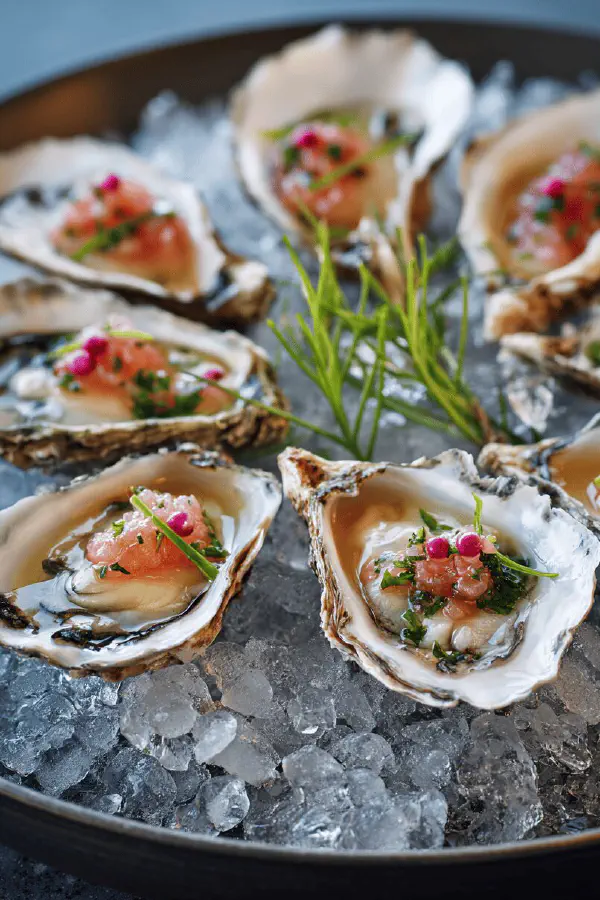
By Kate
"
Fresh oysters served chilled on crushed ice with a tangy mignonette made from blood orange zest, lime juice, and shallots. The citrus adds brightness, balancing the ocean flavor. Garnished with bits of segmented grapefruit and a touch of cracked pink peppercorns. A light, refreshing starter that pairs well with bubbly or an Aperol Spritz. Practical tips for shucking and keeping oysters cold included. Variations for lemon or tangerine zests suggested. Simple, no-fuss plating relying on tactile freshness cues.
"
Prep:
25 min
Cook:
0 min
Total:
25 min
Serves:
12 servings
seafood
oysters
citrus
appetizer
French
Introduction
Oysters raw, cold, fresh. The smell of ocean salt, shiny meat nestled tight. Citrus cuts sharp, breaks sea brine with zest and the bite of lime and shallots. This one is about balance — not too much acid, not lost in dullness. The tactile feel of oysters slipping from shells, cold plate stinging fingertips. Not complicated. Just clean, quick prep when guests need a starter that sings without fuss. Make mignonette your own — swap citrus, tweak acid to your taste. Keep oysters cold, shuck fast, serve chill, and watch the liquid pearls shine. Drink bubbles alongside. Simple math, high impact.
Ingredients
About the ingredients
Freshness on oysters makes or breaks this dish. Buy local, reputable fishmongers. Keep oysters in the coldest part of your fridge on a wet towel. Do not submerge in water or airtight containers — kills taste, muddles texture. Citrus choices affect final precision; blood orange for deep aromatics, lime adds bite where lemon softens too much. Shallots preferred over raw onions for subtle onion fragrance without harshness. For crushed ice, clear large shards preferred to avoid dilution and quick melting; coarse sea salt can be a stable backup but avoid over-salting if using edible salt under shells. Pink peppercorns give gentle fruitiness with pepper sharpness. If none on hand, fresh black pepper is fine but less impactful. You want texture contrast across the palate, not just salt and acid stretching.
Method
Technique Tips
Zesting citrus requires care; avoid the white pith which turns bitter. Using a microplane grater directly over the bowl captures volatile oils without waste. Segmenting (supreming) citrus involves cutting away all white membranes so only flesh remains—this reduces bitterness and yields neat bites on oysters. In oyster shucking, a quick pop at the hinge prevents broken shells and liquid loss. Work on a damp towel for grip and safety. Arrange oysters cold on crushed ice or a bed of coarse sea salt for a visually appealing presentation that stabilizes shells. Spoon mignonette carefully so it pools inside the oyster, not over the shell where it runs off. The last crack of pepper should be fresh—pre-ground pepper loses aroma rapidly. No leftovers—serve fresh or not at all.
Chef's Notes
- 💡 Shuck oysters fast, keep them cold; place shells on ice. Cold plate keeps brine; preserves texture. Freshness is key. Use a towel to grip.
- 💡 Zest technique critical. Avoid white pith; it's bitter. Use microplane, captures oils without waste. Angle zucchini, make zest fly.
- 💡 Grapefruit textures add contrast. Use firm pieces, cuts clean. Squeeze juice into mignonette for balance; don’t let acidity overpower.
- 💡 Rotate between different citrus; blood orange brings deep notes. If unavailable, adjust with tangerine or Seville. Switch shallots for onion if needed.
- 💡 Check for leftovers; they don't sit well. Fresh oysters must be served right after shucking. Time matters. Liquor loses firmness fast.
Kitchen Wisdom
How to serve oysters cold?
Keep in the fridge, on a wet towel. Avoid airtight; they lose texture. Serve immediately after opening.
What if I can't shuck well?
Use a thick cloth or oyster glove; protect fingers. Shuck right before serving. Don’t let them sit.
Can I substitute shallots?
Yes, use minced red onion. But shallots are cleaner, less harsh. Experiment with citrus for flavor tweaks.
How to store opened oysters?
Use a shallow dish, cover with damp towel. Not too long, though. Fresh is best; discard if unsure.
